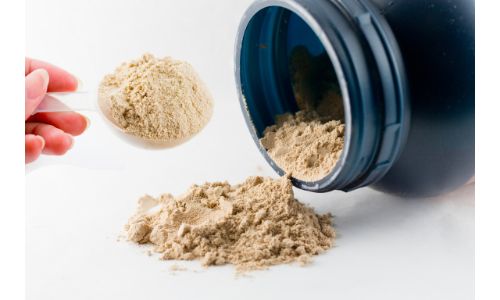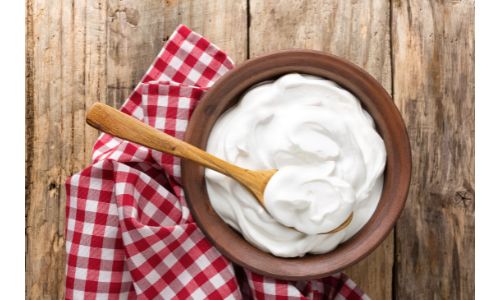Every athlete prefers whey protein for building muscle mass and strength, and rightly so! But how do you prepare this? Is it possible to prepare whey at home? And if so, will it be pure and hygienic just like the marketed product, or will there be any side effects?
These are prevalent questions asked by millions around the world. In this article, we shall see about the manufacturing process of whey protein and answer all your queries regarding whey protein.
How Is Whey Protein Prepared?
Preparing the best whey protein in India is simpler than expected. Whey is prepared from milk and dairy products, and you can understand the process better by diving deeper into each step of preparing whey. A popular protein source among bodybuilders and fitness freaks, whey can level up your gym routines and physical performance.
Step By Step Process Of How Whey Is Prepared
1. Extracting From Cow’s Milk
Regular bovine milk contains 3.5% protein that constitutes two types of protein, namely 80% of casein and 20% of whey. The cattle are adequately fed and healthily maintained before extracting milk.
2. Shipping And Transport
After obtaining milk from the cows, it is stored in big refrigerated tankers at the appropriate temperature to keep it cool. Later, tons of cooled milk is transported to the nearest processing facility.
Note: Fresh cow milk contains bacteria that can harm human health and must be pasteurized before consumption.
3. The Process Of Pasteurization
Pasteurization eliminates bacteria and harmful pathogens from milk by boiling at high temperatures of 70-80◦C and instantly cooling at 4◦C. This process does not affect any essential nutrients present in milk.
4. Separating Milk By Enzymes
Milk naturally contains various enzymes such as alkaline phosphatase, lactoperoxidase, lysozyme, lipase, proteinase, etc. Certain enzymes such as renin or chymosin can involve in curdling milk by altering the casein micelle structure and converting caseinogen into insoluble casein. Milk gets divided into solid and liquid parts after curdling. The solid part is casein and is collectively used in the cheesemaking process. The liquid part is whey, along with fats and carbs.
Note: Rennin is available commercially as Rennet and is used for manufacturing cheese.
5. Filtration And Purification
After deriving whey from enzyme separation, it can be filtered and purified by membrane filtration and ion exchange technology.
Membrane Filtration
Membrane Filtration is a cold temperature separation process for mechanically and chemically sieving particles with the help of porous membranes. By using pores of different sizes, whey can be defatted by allowing the carbs and minerals to pass through the porous filters. Moreover, micro-filtration can also filter whey through an array of ceramic micro-filters.
Ion Exchange
Ion exchange involves selectively isolating specific protein components by sending raw whey through the column and separating the proteins based on differences in their net charge. After washing away the rest of the ingredients, the next step is carried on.
6. Spray Drying
The whey liquid is introduced to a spray dryer where water can be rapidly removed by the action of hot and cold air. Without losing its nutritional value, the whey protein can be dried by evaporating the residual moisture.
7. Quality Control
An effective quality check is mandatory for ensuring the level of unflavored protein present. The final whey product contains approximately 80-90% of protein.
8. Blending And Packaging
After ensuring quality, the whey protein powder is blended with other ingredients, and organic flavors are added, such as natural sweeteners like thaumatin and solubility agents such as lecithin. Sample testing is also carried out to estimate the levels of protein, fat, amino acids, and other ingredients. Ultimately, the whey protein is ready for packaging and sealing into cardboard canisters and shipping throughout the country.
Can Whey Be Prepared At Home?
Yes, absolutely! Here are simple ways to prepare whey protein at home.
The Basic Recipe
Requirements
- 1 gallon of milk
- 75 ml of lemon juice or white vinegar
Procedure
- Pour the milk into a large pot and heat the milk at 80-85C
- Add 75ml of lemon juice/ white vinegar after the milk starts to simmer
- Let the solution settle for 15-20 minutes so that the milk undergoes curdling
- Strain the liquid and drain it entirely from the curdles
- Process the whey using a dehydrator or by spreading it over a tray under medium flame
- Dry the whey for 24 hours and blend it into a powder
- Store the prepared powder in a suitable container
From Yogurt
Requirements
- 500 grams of yogurt
Procedure
- Use a cheesecloth, line it with a filter, and place it into a bowl.
- Scoop the yogurt into the lined strainer, place the bowl into a fridge, and allow the liquid to drain
- Pour the collected whey into a container and dehydrate the whey
- Dry and blend the whey into a powder and store it for making protein shakes and cupcakes.
Note: The recommended dose for taking whey protein on a daily basis is 25-50 grams per day.
Frequently Asked Questions
1. Is whey protein natural?
Whey protein is made out of milk and is completely natural without any chemical modifications.
2. Should I drink whey protein every day?
Your consumption of whey protein depends on your level of fitness. Whey protein can be taken for a few days a week or daily.
3. Should I take whey protein with milk or water?
A scoop of whey protein is better to take with water rather than milk if you want to lose weight and gain lean muscle mass.
Conclusion
Whey protein is an essential nutrient source for boosting energy and reducing the possibility of medical conditions such as cancer, hepatitis, stress, and depression. Used worldwide as ingredients in a wide variety of food products and as powdered supplements, it takes 200 liters of milk to produce 1Kg of whey protein powder. In this article, we have seen the various steps involved in preparing whey protein for large-scale distribution, as well as the various methods of preparing whey protein at home.









